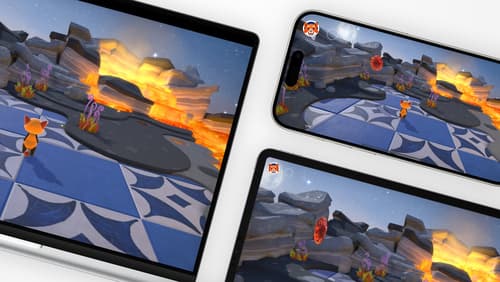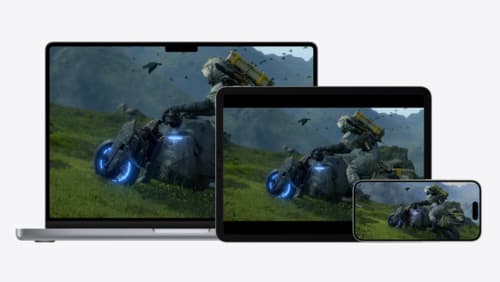I’m building a game, what App Store review guidelines should I consider
Asked on 2024-07-29
1 search
When building a game for Apple platforms, there are several App Store review guidelines and best practices you should consider to ensure a great user experience and successful submission. Here are some key points based on the WWDC sessions:
-
Human Interface Guidelines for Games:
- Apple has a section in the Human Interface Guidelines specifically for games. This includes tips on improving the first launch experience and ensuring fonts are legible on all Apple display sizes. For more details, you can refer to the session Port advanced games to Apple platforms.
-
Design for the Device:
- Ensure your game’s interface adapts well across different Apple devices. This includes considering how your game’s defaults, layout, text, and controls will feel for players on various devices. For example, make sure your text is large enough to read on smaller screens and that your layout is flexible to accommodate different aspect ratios. For more insights, check out the session Design advanced games for Apple platforms.
-
First Launch Experience:
- Aim to let players jump into gameplay as soon as possible. Avoid making them wait for additional downloads after the initial installation. This is crucial for maintaining player excitement and engagement. More on this can be found in the session Design advanced games for Apple platforms.
-
Legibility and UI Design:
- Make sure your UI is legible, especially if you are porting a console or PC game to devices with smaller displays. Use recommended default and minimum type sizes for different devices to ensure readability. For example, on iPhone and iPad, aim for a type size of 17 points or higher for body text. More details are available in the session Design advanced games for Apple platforms.
-
Adaptive Layouts:
- Design an adaptive game interface that scales across different screen sizes. This not only saves time but also helps future-proof your game for new devices. Plan early to ensure your layout reacts to different aspect ratios and device models. For more information, refer to the session Design advanced games for Apple platforms.
-
Testing on Real Devices:
- Test your game on as many real devices as possible to ensure the UI looks and behaves correctly. This helps in identifying any issues with text readability or control accessibility. More on this can be found in the session Design advanced games for Apple platforms.
By following these guidelines and best practices, you can create a game that not only meets the App Store review guidelines but also provides a great user experience across all Apple devices.

Design advanced games for Apple platforms
Learn how to adapt your high-end game so it feels at home on Mac, iPad, and iPhone. We’ll go over how to make your game look stunning on different displays, tailor your input and controls to be intuitive on each device, and take advantage of Apple technologies that deliver great player experiences.

Meet TabletopKit for visionOS
Build a board game for visionOS from scratch using TabletopKit. We’ll show you how to set up your game, add powerful rendering using RealityKit, and enable multiplayer using spatial Personas in FaceTime with only a few extra lines of code.

Port advanced games to Apple platforms
Discover how simple it can be to reach players on Apple platforms worldwide. We’ll show you how to evaluate your Windows executable on Apple silicon, start your game port with code samples, convert your shader code to Metal, and bring your game to Mac, iPhone, and iPad. Explore enhanced Metal tools that understand HLSL shaders to validate, debug, and profile your ported shaders on Metal.
